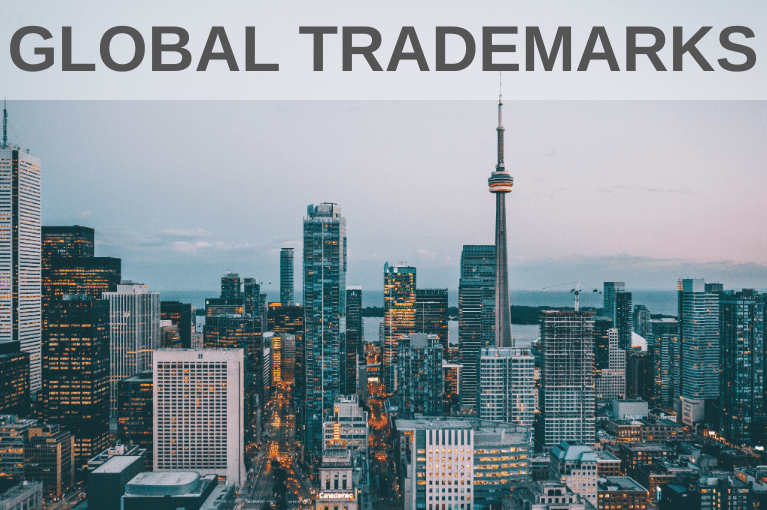Thanks to a booming global economy, trademark applications worldwide are on the rise. In fact, according to the World Intellectual Property Organization’s 2017 report, after growing annually for the past seven consecutive years, global trademark registrations now are filed at a rate three times faster than in 2001.
For some small and mid-sized business owners, a global trademark might not be at the top of their to-do list. But, in today’s digital economy, it’s easier than ever to expand overseas, and that’s just what many businesses are doing. One survey found that 58 percent of small businesses have international customers and 72 percent plan to grow their international base.
And just as business owners have taken the smart steps to protect their trademark and other intellectual property here in the United States, they also need to take action to safeguard their assets when they do business abroad. Failure to put the proper shields in place could damage a business’ brand and, ultimately, its competitive edge and ability to grow.
Unfortunately, successfully applying for trademark rights in the United States will not automatically provide you the same protections in every other country. The Madrid Protocol, a process that provides a single application for global trademarks, makes global trademark registration easier. But that doesn’t mean the process to register for a trademark anywhere in the world is straightforward for business owners.
Here are five things U.S.-based small and mid-sized business owners need to know about global trademark registration.
1. Start with United States trademark registration
Registering your trademark in the United States is a critical first step for businesses whether they do business overseas or not. Business owners can head to the U.S. Patent and Trademark Office’s website for an online application, along with resources and guidance about the often lengthy and complex legal process to make a trademark official.
Though U.S. trademark registration does not protect your trademark elsewhere, it is required if you want to grow your business beyond the United States and secure trademark registration overseas with the help of the Madrid agreement. Before you can file an international application through this system, you’ll need to have registered or applied for a trademark on your home turf.
2. Decide where you need trademark protections
Think about where your business might grow in the coming years. Some choices may be obvious. Perhaps your partner is a French citizen, so you intend to open a shop in Paris. Or, maybe your business already has operations in Vietnam.
But it’s possible you may need to conduct some market research too before you make your list of countries where you’ll seek trademark safeguards. Could your pop culture product gain traction in Japan? Have you developed a mobile app that could take off anywhere? Or, should you take the time now to protect yourself in countries such as China or India where trademark infringement is common?
3. Take advantage of the Madrid Protocol
Once you’ve applied for a U.S. trademark and determined where you need global protection, now it’s time to take advantage of the Madrid Protocol. Dating back to 1891, the international agreement lets business owners register trademarks in multiple countries. Instead of working country by country to secure the required trademarks, the Madrid Protocol provides a more convenient and cost-effective way to secure global trademarks.
Through the agreement, business owners can file one trademark application and pay a single set of fees as they seek protection in up to 118 countries, according to the World International Property Organization, or WIPO, which administers the program. The list of countries includes major global economies such as China, Russia, Japan and members of the European Union. Together, those countries represent more than 80 percent of global trade.
Before taking advantage of the program, you must first find out if a similar trademark already exists in the market where you hope to expand. WIPO’s Global Brand Database provides a one-stop shop to check for any conflicts.
From there, you can file your international application with the U.S. Patent and Trademark Office’s Trademark Electronic Application System for International Applications as long as you have a pending application or registration already on file.
4. Act fast to gain “trademark priority”
Trademark priority is granted to the business that files for trademark protections first. And international law encourages businesses to file for global protections within six months of the date that they seek them in their home country.
If you file within that period of time, your “priority” date overseas will be the same as your earlier U.S. application filing date, giving you more legal recourse if another business attempts to use your trademark. Of course, you can apply for international trademarks at any time, but you won’t be able to take advantage of that earlier filing date if you wait longer than six months to file.
5. Get support
The Madrid agreement streamlines the work required to apply for international trademarks, but the legal process remains incredibly complex. And not every country is included in the Madrid agreement. Canada, South Africa and Taiwan are among the countries that are not part of the protocol. Intellectual property lawyers with experience working on international trademarks have the expertise to move an application through the process and, once they’re registered, enforce a business’ trademark rights.
We provide a dedicated team of experienced attorneys for your company, with all the experience and technology of a big law firm for half the price!
More Resources You’d Like










